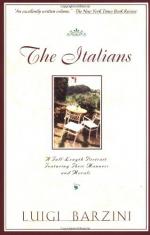There are the judges, twelve in number, robed in black, scarlet, and ermine, their broad crimson sashes sweeping the pavement. The gonfaloniere—that ancient title of republican freedom still remaining—walks behind, attired in antique robes. Next appear the municipality—wealthy, oily-faced citizens, at this moment much overcome by the heat. Following these are the Lucchese nobles, walking two-and-two, in a precedence not prescribed by length of pedigree, but of age. Next comes the prefect of the city; at his side the general in command of the garrison of Lucca, escorted by a brilliant staff. Each bears a tall lighted torch.
The law and the army are closely followed by the church. All are there, two-and-two—from the youngest deacon to the oldest canon—in his robe of purple silk edged with gold—wearing a white mitre. The church is generally corpulent; these dignitaries are no exception.
Amid a cloud of incense walks the archbishop—a tall, stately man, in the prime of life—under a canopy of crimson silk resting on gold staves, borne over him by four canons habited in purple. He moves along, a perfect mass of brocade, lace, and gold—literally aflame in the sunshine. His mitred head is bent downward; his eyes are half closed; his lips move. In his hands—which are raised almost level with his face, and reverently covered by his vestments—he bears a gemmed vessel containing the Host, to be laid by-and-by on the altar of the Holy Countenance. All the church-bells are now ringing furiously. Cannons fire, and military bands drown the low hum of the chanting. Every head is uncovered—many, specially women, are prostrate on the stones.
Arrived at the basilica of San Frediano, the procession halts under the Byzantine mosaic on a gold ground, over the entrance. The entire chapter is assembled before the open doors. They kneel before the archbishop carrying the Host. Again there is a halt before the snowy facade of the church of San Michele, pillared to the summit with slender columns of Carrara marble—on the topmost pinnacle a colossal statue of the archangel, in golden bronze, the outstretched wings glistening against the turquoise sky. Here the same ceremonies are repeated as at the church of San Frediano. The archbishop halts, the chanting ceases, the Host is elevated, the assembled priests adore it, kneeling without the portal.
It is one o’clock before the archbishop is enthroned within the cathedral. The chapter, robed in red and purple, are ranged behind him in the tribune at the back of the high altar, the grand old frescoes hovering over them. The secular dignitaries are seated on benches below the altar-steps. Palchi (boxes), on either side of the nave, are filled with Lucchese ladies, dark-haired, dark-eyed, olive-skinned, backed by the crimson draperies with which the nave is dressed.




